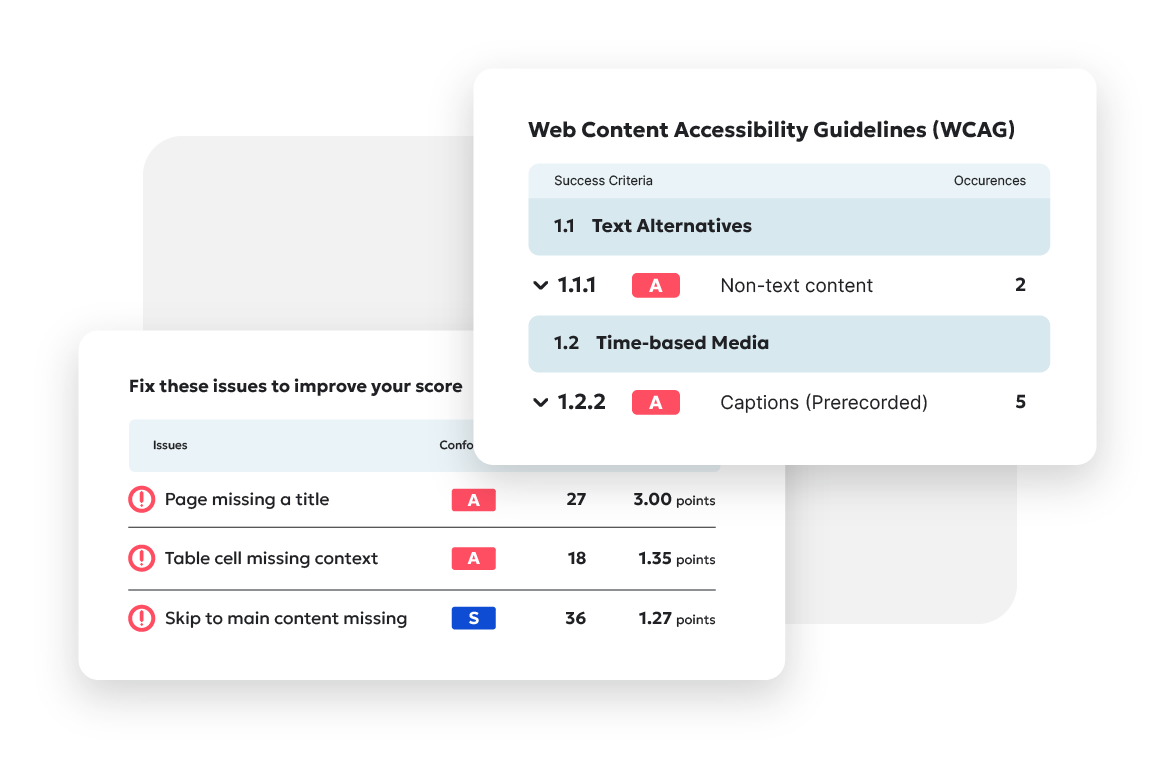According to a Wall Street Journal article published over the weekend, Kramer Knives, a two-person company that makes kitchen knives, recently faced a lawsuit from a visually impaired individual who was unable to purchase a knife set listed online.
The lawsuit came with no warning: no phone call, no email. The company’s owner wound up spending $16,000 in legal fees and $3,000 fixing the website, presumably so it would comply with federal civil rights law.
My guess is that Kramer’s site lacked things like alternative text on images and compatibility with common assistive technologies, and that those oversights were enough to trigger the suit.
As noted in the article, suits like these are on the rise, to the point that they’ve become a veritable cottage industry, complete with firms that specialize in web accessibility and file “cut and paste” lawsuits at the drop of a hat.
The risks for large enterprises
The thing is, suits like that filed against Kramer Knives are small fry. Large enterprises face even more serious consequences if their websites fail to meet regulations like the Americans with Disabilities Act (ADA) or the European Accessibility Act (EAA). These regulations are often based on the Web Content Accessibility Guidelines (WCAG), which are the international technical standards adopted by global digital accessibility laws.
Retail and ecommerce sites are often the targets of digital accessibility lawsuits, ranging from the 2006 landmark case in which the National Federation of the Blind filed against retail giant Target, to a class action suit against the San Jose Sharks (at issue, a mobile app that wasn’t accessible to individuals with visual disabilities). Not even celebrities get off the hook: Back in 2019, Beyonce’s company was sued because Beyonce.com failed to make its products and services available to visually impaired users.
B2Bs are not immune. ADP, the human resources software company, was sued by the LightHouse for the Blind and Visually Impaired back in 2020 and reached a settlement agreement in 2022; one can only imagine how much in legal fees that cost ADP. There are no doubt many other examples of digital accessibility violations in B2B, but they tend to settle out of court.
Thus far, ADA and WCAG standards have been primarily applied to Title II organizations (i.e., state and local governments), but it’s looking like Title III organizations (i.e., any business or nonprofit serving the public, therefore including private entities with a digital presence) will increasingly be subject to these technical standards for digital accessibility.
The short version? If you’re in the US, then you need to be on top of ADA and guidance being published by the US Department of Justice, Civil Rights Division — it's likely going to apply to private businesses soon. Private entities have been put on notice that if they’re not conforming to WCAG 2.1 Level AA standards, they’re at risk of legal action.
Note that educational institutes are not exempt, either: Harvard and MIT got hit with a lawsuit, too, for failing to caption online courses.
Siteimprove’s history as proponents of digital accessibility goes back to before legal requirements were implemented, and we’ve built much of our business on digital accessibility for customers in crucial sectors like healthcare, financial services, and manufacturing.
Digital inaccessibility is bad for business
Addressing web accessibility is not just a legal obligation, but a strategic measure for companies that want to avoid costly legal disputes. After all, many of these cases don’t make it to court but rather wind up settling for undisclosed, and presumably large, amounts, and even word of a settlement can damage a business’s reputation.
Moreover, getting it right with web accessibility is good for any business’s bottom line: About 15 to 20 percent of the world’s population lives with a disability, and any enterprise that doesn’t meet that population’s needs risks losing its business.
It’s no secret that inclusivity in general is good for brands (Hello, Barbie), but when you figure that the 1.3 billion people with disabilities, plus their friends and families, have a spending power of about $13 trillion, no reasonable business can afford to look the other way.
Strategies for getting ahead of digital accessibility
Given that the number of digital accessibility lawsuits filed against businesses large and small is on the rise, web accessibility has entered the realm of urgency. Yet many companies are like deer in the headlights: They don’t know how to even begin to identify and tackle barriers to accessibility.
As someone who has worked in this field for years, let me assure you: Proactivity is the name of the game.
First off, if you’re a digital marketer, CMO, or web developer, do your reading. The rules on accessibility vary from region to region and can be dizzying. If you’re in Europe, then you need to observe the rules of the EAA. Same thing if you do business in Europe: EAA applies to you. The deadline to comply with the EAA was June 28, 2025. If you’re in the US, then you need to be on top of ADA and guidance being published by the U.S. Department of Justice, Civil Rights Division.
In Canada, be aware of the Accessible Canada Act, as well as provincial legislation such as the Accessibility for Manitobans Act. If you’re in Australia or New Zealand, then there’s another set of rules in each country.
But no matter where you are, you need to apply the standards set forth by WCAG. (That’s where we come in: We’re the experts in WCAG standards, and both our teams and our tools operate to make meeting digital accessibility far less overwhelming for our customers.)
When it comes to accessibility testing you should be aware that different disabilities inform specific standards. For example, colorblindness fuels rules about color contrast and use of color. Forms that don’t use a <label> element correctly in the code for each field create barriers for people using screen readers or speech input technology. Indeed, there are a host of accessibility issues that can easily put your company at risk.
Next, you need to be aware of what automated accessibility testing can do — which is a lot. An advanced automated testing platform will highlight all sorts of issues, ranging from issues with forms and labels to text resizing, and list quick win fixes you can make with things like skip navigation links or alternative text.
But buyer beware: Some automated testing tools make false promises, often by assuring their customers that AI has all digital accessibility covered in the form what’s called an accessibility overlay. Even those false marketing claims have resulted in at least one class action lawsuit.
Anyone who understands the importance of the digital accessibility industry like I do knows that it is impossible to become fully compliant overnight. Attempts to do so can even make things worse. As we’ve always said at Siteimprove, “Accessibility is a process, not a project.”
But it is a process that is worth the investment and attention. (Check out how one accessibility overlay made a site less accessible to one man with a visual disability.)
Automated testing must be paired with human perception: Automated tools struggle to understand the context and semantic meaning of content, which can impact accessibility. For example, automated tools can detect the presence of alternative text for images, but they can’t detect whether the alternative text accurately or usefully describes the image. Same thing for video captions: Tools can detect that the videos exist, but they can’t determine the presence of captions, how accurate the captions are, or if they’re properly synchronized with the video.
Issues like these that do not follow WCAG and therefore do not comply with country-specific laws are only detectable through manual testing that takes into account how people with disabilities experience the web and how assistive technologies, like screen readers, convey information.
No matter what size your business is, I recommend getting ahead of accessibility and all its nuances sooner rather than later. Even for a tiny business like Kramer Knives, the costs of non-compliance can be crippling. When faced with addressing digital accessibility challenges, a proactive solution is a linchpin in your overall plan for compliance. A holistic approach is a powerful expression of your brand’s commitment to inclusivity.

Ready to create more accessible and inclusive web content?
Siteimprove Accessibility can help you create an inclusive digital presence for all.
Request a demo
Iza Misiorny
Izabel is Head of Solutions Marketing and Evangelism at Siteimprove. She turns complex products into compelling stories and market leadership. With a track record of scaling ARR past $100M, driving two global rebrands, and crafting customer-centric positioning, she specializes in building GTM strategies that accelerate growth and enterprise adoption.
